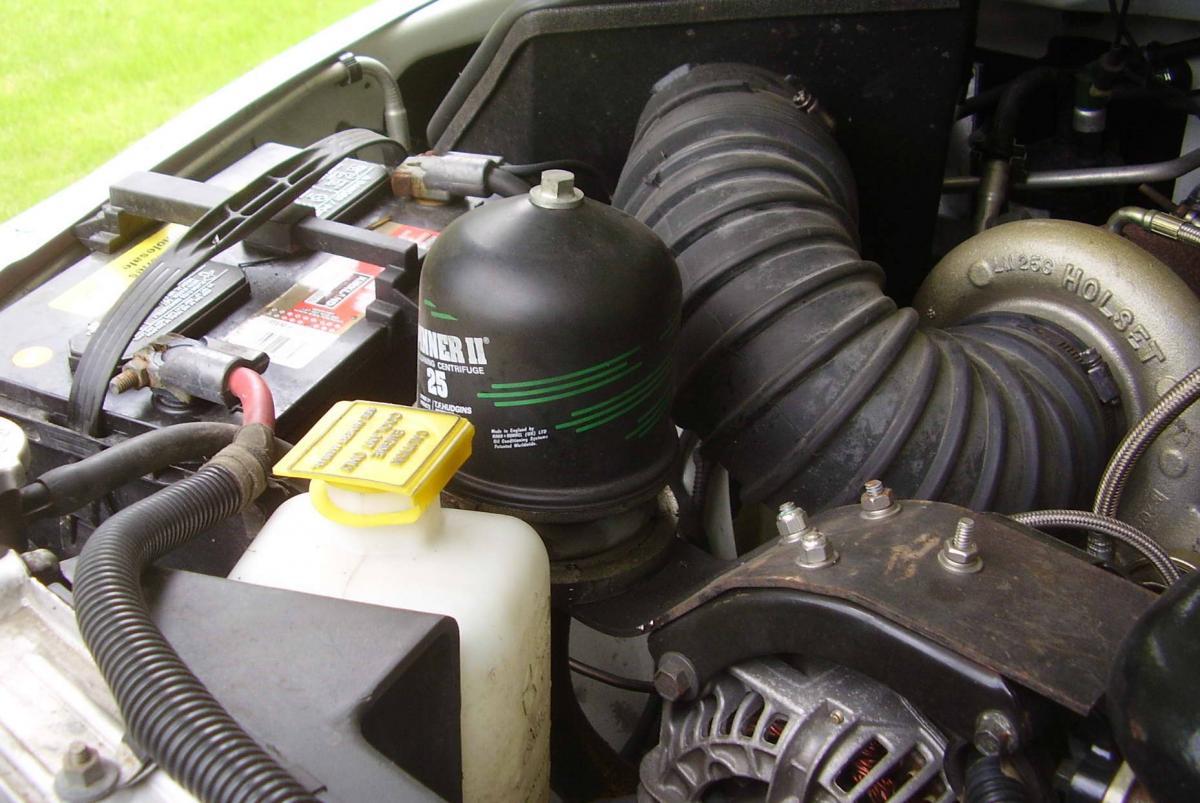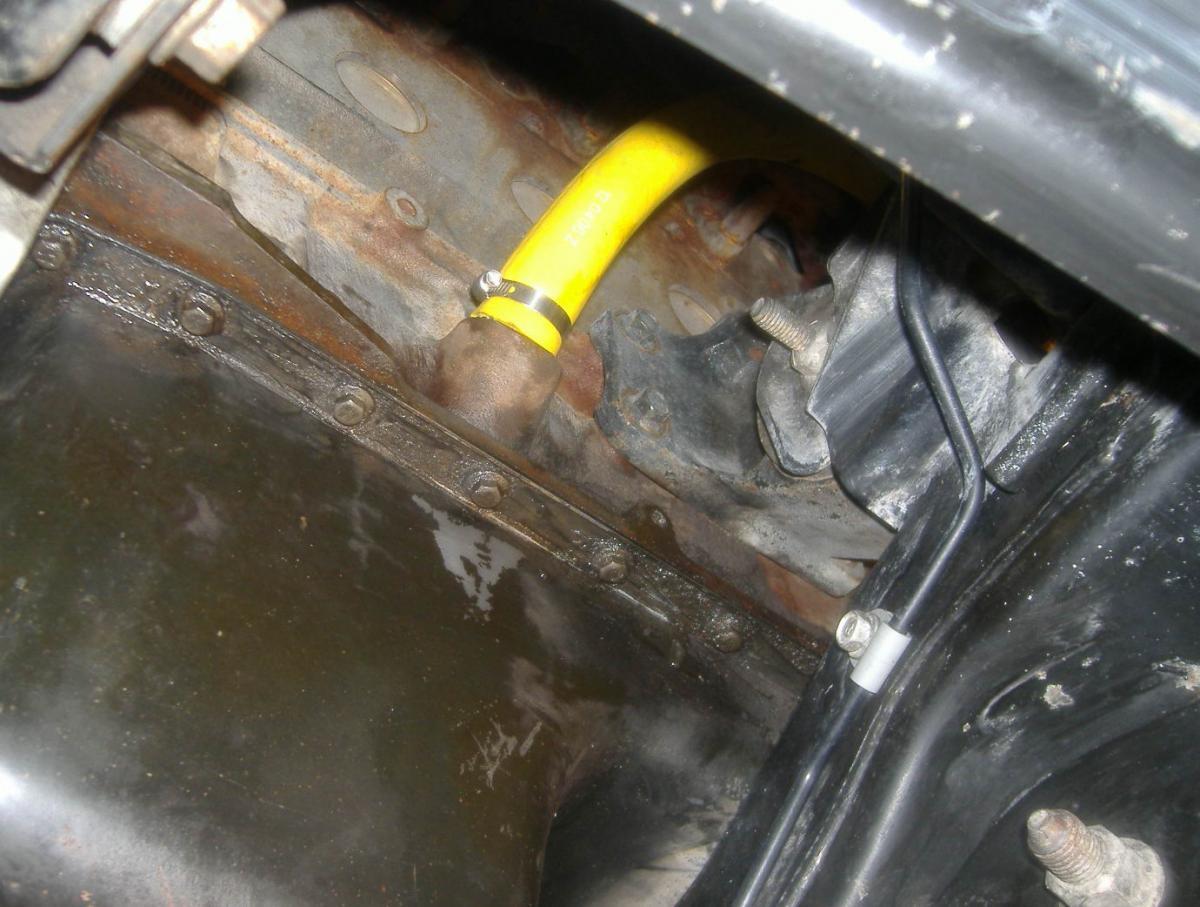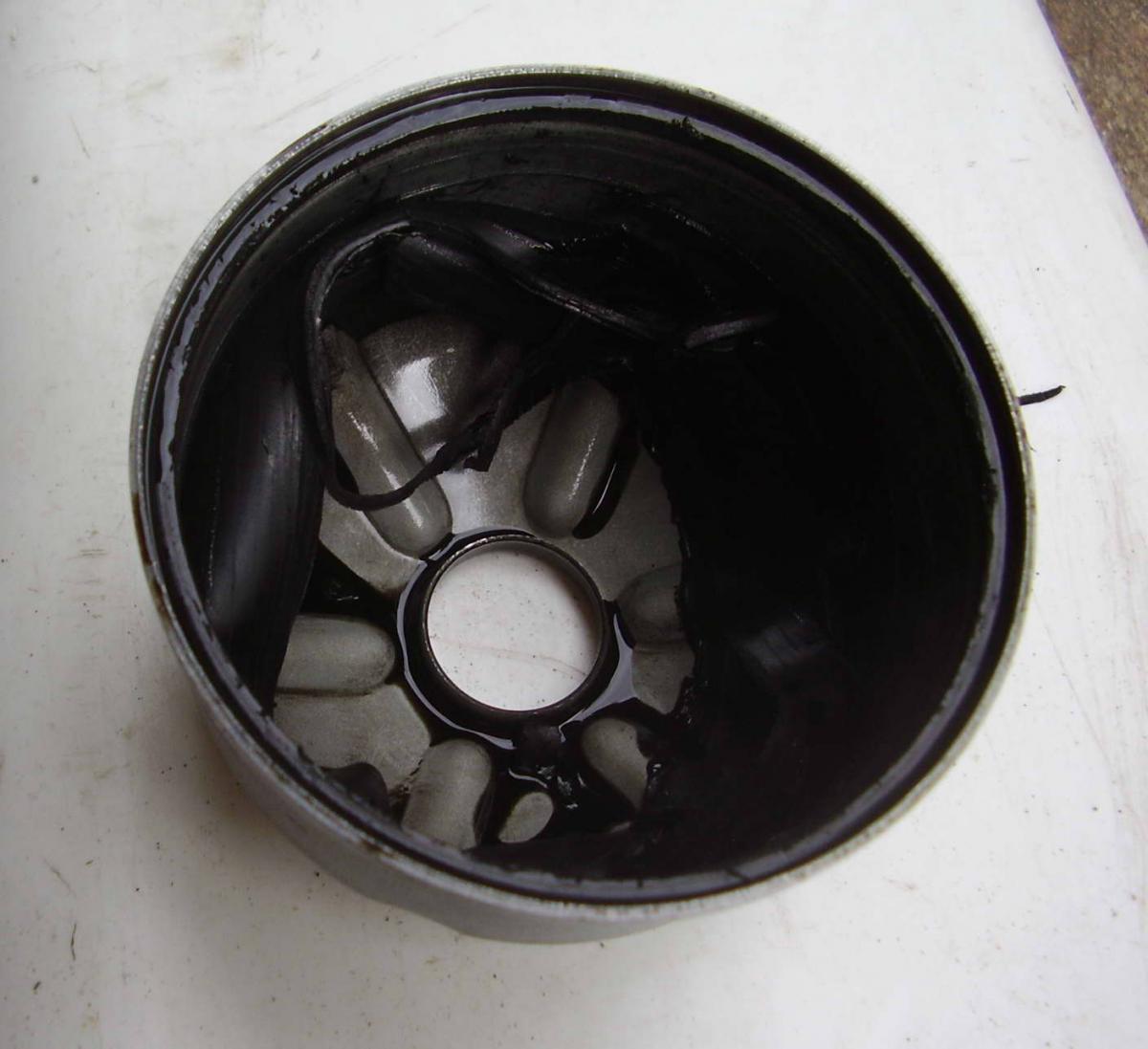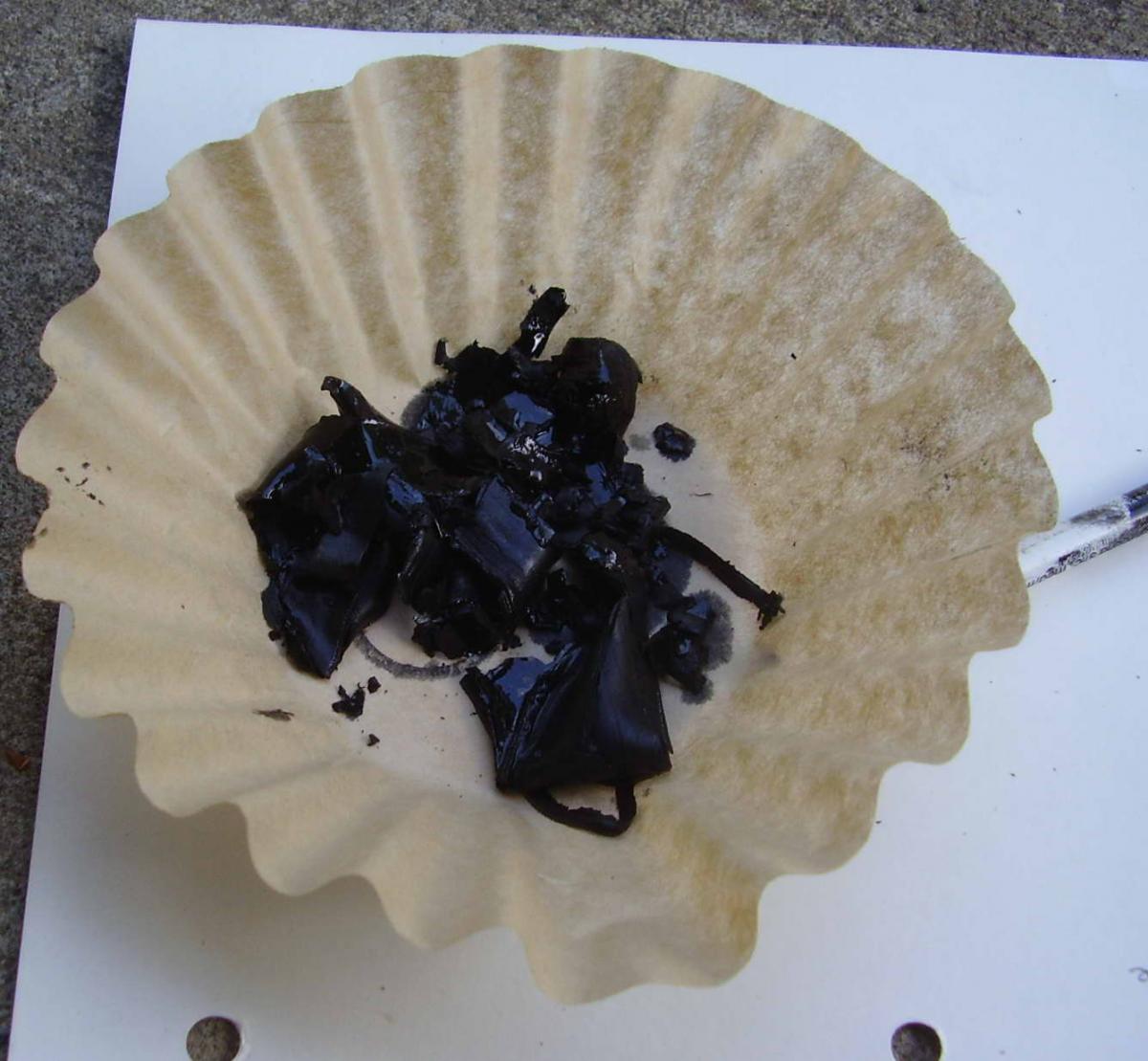Everything posted by vineyardmh
-
Oil and filter what do u guys run
Assuming the discussion was about whether or not the Spinner II is sized for our ISB engines - the answer is yes - it is, if you get the proper model (Model 25). There are various sized Centrifugal bypass filters. Big rigs might have a flow rate of 2 to 4 gallons per minute, and they have bigger bowls and can store more particulates so that one can go longer without removing and cleaning it. Some fleets are going to 150K to 250K between complete oil changes; they rely on oil sampling to verify the oil still has adequate life to continue use. The Spinner II Model 25 is rated suitable for all diesel pickup trucks, and it has 0.8 GPM - which is a trivial 'tap' from the main oil flow through the regular filter - and to the engine. I clean the bowl about every 15K miles - and the bowl could probably go to 150K miles before needing cleaning. BTW - I have a second unit that I am going to sell...with most of the mounting hardware and a base plate. The Spinner II Model 25 lists for $452, and I am going to list mine for $250.
-
Oil and filter what do u guys run
I have been running the Spinner II for about 4 years....30K miles. Additives are supposed to be liquid - not particulate - so I don't worry about what it captures. The main stuff captured would be very fine soot suspended in oil. Last time I removed it - I weighed the material removed - and it was about 0.7 ounces - accumulated over 8,000 miles since previous cleaning. My installation can be seen here - scroll through the posting and you can see installation photos - and a previous cleaning.
-
Oil and filter what do u guys run
Fleetguard oil filters. Chevron Delo 15W-40...but I am tempted to try the new synthetic 5W-40 next oil change. I also run a centrifugal oil filter...a Spinner II - bypass filter - that filters down to 1 micron.
-
Airdog problems... again...
Suggestion - (and - since IBMobile is pointing to possible problems from the ECM...) - install a temporary switch to supply 12 V - from the battery - directly to the output of the relay that supplies the Airdog. Have the switch inside the cab. THEN - when you are expecting the Airdog to turn on...like after key on and bumping starter - and you don't see any fuel pressure build up - flip the switch and see if the Airdog comes on. If it didn't come on when expected...and flipping the switch does give you the pressure - you will need to troubleshoot the relay and the signal that energizes the relay. IF you don't get fuel pressure under either circumstance - then the problem is likely down stream - power into the pump motor - or the motor itself. AND- for good measure - you could run 2 lines from the pump connector into the cab - and connect those lines to a LED (check for proper polarity of the LED - or use an incandescent bulb...) - and the LED will turn on when power is going to the pump motor. If you have the LED on - but no fuel pressure - well -either your pressure gauge is faulty - or your pump just isn't pumping.
-
Big change in my life...
Some comments - 1. Many states have stopped issuing tabs that indicate the year. 2. My son was making a trip across the US - Navy move from east coast to west coast. He got pulled over in Colorado for not having a current registration. No - he wasn't pulled over for speeding or anything else. I suspect that the police car had a camera/scanner that would 'see' the car, identify the license (in this case - it was a Washington State auto license) - and verify the license is current, not reported as stolen, etc. He was asked about not having current registration. He had forgotten - but the state had not sent anything out...given his moves. I went on line and re-registered the car immediately (thanks for internet based systems!!) -and he had no further problems on his travels - and he picked up the registration tab and paperwork from me a few weeks later. 3. I suspect that if you paid the fee - (and in WA - I can either pay with credit card - unlike ID - no credit card fee.....OR - I can give a bank number/account number and pay that way.) For me - it beats the drive - and I get it registered and it is in the system. I can even save to my phone the electronic receipt that shows I updated my auto registration...if I were pulled over and could not find the piece of paper (or had not received it yet). 4. I suspect that if you registered electronically - you would be in the 'system' - and any police pulling you over would be more than sympathetic to your lack of time to run elsewhere to pick up tabs while you are so busy taking MoparMom ...and yourself - back and forth for major medical issues!
-
Airdog problems... again...
The schematic is fantastic reference. NOTE - you can pull the relay from the Relay block (assuming it is plugged into a relay block) and put a jumper wire from 87 to 30 - and see if the lift pump starts running. (This can be done with the key off - because the relay gets power directly from the battery via the PDC (power distribution center). Done with the key off - you should be able to hear the pump running. Again - with the relay still pulled - connect a digital meter - one lead to Pin 86 and one lead to Ground (or 85). Set to VOLTS - at 20VDC scale. Turn the IGN key on and 'bump' the starter. You should see 12 - 13 Volts on the meter if the ECM is providing the proper 'signal' to the relay to turn the lift pump on.
-
Big change in my life...
About 40 years ago - at 6'1" - I was a trim 175 - 180 lbs. But - later on - I started doing the 10 lbs added per decade....and in 2010 - I was at 215 lbs - and trying to convince me I didn't have a gut SO - I decided that I needed to fix things. I basically went on portion control - and cut back (maybe 95%) on sugars and carbohydrates. I realized that the government medical recommendations (like avoid bacon and eggs, cut fat out, etc.) - was bogus - and other medical experts were admitting that their recommendations were bad. So - I gave up desserts (except the rare 'splurge') - I had limited amounts of meat (4 to 6 ounces...occasional splurge to 8 ounces)...and I had lots of salads and lots of green vegetables. Over the next year - I lost those 40 lbs that I had put on - and I felt so much better. Exercise - some. Not excessive....and I didn't rely on it. Some wise health nut pointed out that exercise was WAY down on the list of things to do - because 'You Can't Outrun your fork'. You can run HARD for half an hour - and 1 Twinkee will put back those lost calories. Now - back at my 'fighting weight' - I allow myself to have the occasional party, eat 'unhealthy' - but I monitor my weight, and I get back on the Fitness Train as soon as I am more than 3 pounds above my nominal weight.
-
Ham radio operators
KE7XG .......no rig in the truck. Portable rigs I can take camping with me when I take the 5th Wheel places. Several hand-helds - 2M, 220MHz, 440MHz... Trying some digital comm modes....Packet, etc Mike
-
Big change in my life...
Yup. I wish I had taken more time to investigate the swapping of motors. I swapped the entire assembly with the new one. Unfortunately - the hose connections for the 2012 block were/are different from the new one...so I spent a fair amount of time under the truck (in cold weather...Mammoth Lakes, 7,000 ft. elevation) re-doing the lines. If I had known that the new pump was a direct swap with the old one - I would have swapped it out....and been on the road faster!
-
Big change in my life...
Air Dog honored their warranty for me. I installed an Air Dog circa 2012. Last September - on a long distance trip - the pump failed. Dead. The best I could do for the immediate term was to rent a car and drive 150 miles to a Summit Racing store and buy a complete replacement Air Dog pump assembly. Expensive as heck - but no other convenient option that would have me back on the road quickly. (I wasn't about to wait for up to 1 week for delivery of a replacement part.) So - I bought a new on and installed it and resumed my trip. When I got home and had free time - I sent them photos of the bad motor. Seal failed and the motor failed. Lots of 'burnt carbon' smell. Within 2 weeks - a replacement motor pump assembly showed up. Wonderful. I will wrap it up in protective plastic and store it in a safe location UNDER the truck bed. Next time the pump fails, if I am on the road - I can drop the package down, pull out the pump/motor assembly - and swap it - and probably take less than 1 hour to do the swap.
-
Big change in my life...
Fair enough. I just didn't want to 'feed the beast' - that has gotten fairly political (GFM) in the past, if there was a better option. Mike
-
Big change in my life...
Serious question... I tend to be skeptical of "GoFundMe" because they can take 3% to 5% (or more). Since Mopar1973Man already has a "DONATE" link at the top - wouldn't using that ensure that 100% of donations go to him, and nothing for GFM? I don't mind donating - but I want everything to go to the good cause! Mike
-
2wd low setup
Cost me $1300 about 5 years ago. I was looking at spending 40% of that to re-do the hubs...and I figured that if I did the free spin conversion, I wouldn't have to worry about the issues for a VERY VERY long time. Agreed that it doesn't really do much for MPG improvement....but making a tight turning radius is a bit easier....but I didn't do it for that either. I figured that if I spent more the first time - I could save in the long run.
-
2wd low setup
OR - recognize that the front wheel hubs sometimes have problems - and if you put in a "Free Spin" kit....you just leave the hubs unlocked when you want 2L. I did the free spin installation many years ago - and the hubs have bigger bearings, and can be removed and re-lubricated - vs. replacing the entire assembly. And - as a bonus - the u-joints in the front drive and the front differential are not being turned all the time...so less wear and tear on the parts.
-
No wait to start light
Any chance you have the MPG fooler and the switch is set for MPG improvement? That tends to eliminate the need for grid heaters and a Wait To Start function.
-
Install Tips and tricks?
The discussion in the past about dropping the tank is getting a reliable measure to the bottom of the tank. If you drop the tank - when the tank is setting on the floor - how do you account for flex of the bottom of the tank to get a good measurement. If you lift the truck bed - the tank is in the correct position. I am fortunate to have a 2 post lift in my garage - so I raise the lift up - back the truck bed under the arms - attach straps to the bed and lift arms and then lift it straight up. Raise the bed up 2 ft and do some safety chocking...do the work on the tank, then remove chocks and lower it back down. Fast and easy!
-
Frantz Filter being removed.
No noticed problems with vibration, or anything else. It works fine at that location....and you can see the results (the photos showing the crud being cleaned out). And the claim is that the centrifugal filter can pull out finer particles than most any other bypass filter! The 's-curve' shape was to get the top below a level that might interfere with the closed hood. I probably have a few inches to spare....but it tucks the unit down nicely!
-
Frantz Filter being removed.
Per the request.... One photo shows the installation of the spinner - mounted to the top of the alternator mounting plate. A second photo shows the drain line to the unused 'boss' (that has a knock out plug in it..) that is similar to the turbo drain line boss. (Note - the 12 valve engines don't have a second boss available.) Then - the spinner section prior to scraping the contaminants out...after driving 4K miles. The final photo shows the crud scraped into a coffee filter for weighing. A "DIY" project that is reasonable costs. NOTE - if you wait a day before pulling the spinner off to clean....there is much less mess to work with than a Frantz filter (and I have them and use them also...so I know of what I speak!). Feel free to PM me if there are any questions.
-
Frantz Filter being removed.
I added a centrifugal oil filter for my 2002 truck. Very happy with it! I did a 4,000 mile trip - and on return, measured the amount of 'debris' it captured in that 'short' distance. The debris weighed about 0.8 oz....Realistically - the spinner doesn't need to be removed and cleaned frequently...I figure I might do it every 12K to 15K miles, but I could probably extend it to 20K to 25K, based on the amount it will capture/hold. These spinners are rated as excellent for removing particles down to 1 micron....and once installed...no cost to buy replacement filters. I bought a Spinner II (before I found a lower cost unit ..). I found some 3/16" plate steel (about 3" wide, 13" long) - and I shaped it into a "lazy s" by using a hydraulic press, blocks, curved pieces, etc., until the top piece curved along the alternator bracket, and the lower piece was horizontal. I put a 1/4" aluminum plate on top ...drilled 4 mounting holes, drilled a larger hole for the drain - including a 1" NPT threading. Install a 1" NPT x 1" barb fitting. Use 1" stiff hose for the drain line, good for 300 psi and 300 deg. (IIRC). About 3 ft. long. At the lower end - a 7/8" Block Oil Drain fitting to go into the block just above the oil pan and just behind the engine mount. (BOD from Vulcan, about $10.) For the oil feed to the spinner, use suitable high pressure, high temp oil line to go from the spare oil port next to the oil line going to the turbo. Let me know if you have any questions.
-
Battery Drain
I had a similar problem...about 470 mAmp continuous drain - and I figured I would post my troubleshooting results here. Per the Tech Manual - the Ignition Off Device Fuse provides power to the very few items that need to stay powered up with the key off...maybe 10 to 20 mAmps. I was way past that, and the truck batteries (both fairly new) would drain down over 3 or 4 days. I hooked up a milliamp meter between the negative terminal of the passenger side battery and then disconnected the driver side battery negative terminal. (This keeps any surging on power on/power off from occurring.) With the meter in place - I saw about 470 mAmps. I proceeded to disconnect 1 fuse at a time, check current reading - then re-insert. I did this for every fuse in the dash fuse block and in the Power Distribution panel under the hood. NO CHANGE. Very frustrating. So - I disconnected all fuses and left them out. Still the same reading. (Actually -when pulling the IOD fuse, the current drain decreased by about 15 mAmps.) I then even disconnected the red lead to the power distribution block AND the black lead from the alternator. Still saw 470 mAmps. Okay - at this point - the only 'un-lifted positive lead went to the engine starter. So - I went under the truck to see if there were any power wires going from the starter main power lead to some other location. NONE. HOWEVER - it was a bit dirty and greasy on/around the starter terminal - so I wiped everything down and cleaned up around the main power lead and the starter terminal. Checked the ammeter - and the current drain was gone. I was more than a bit surprised - oil and grease are not conductive....but with enough moisture and enough dirt, apparently there was a low resistance path (maybe about 25 ohms) for current to flow. After cleaning...the battery drain is a normal 10 to 15 mAmps - as expected, and my battery is not being discharged over a few days. Moral of the story - cleanliness might not be next to Godliness - but it sure can eliminate some bad battery draining resistance!
-
Zombie Pump? Can you have P1688 but the pump still runs?
I received the 'dread' P1688 - but when reviewing the various threads, it is often accompanied by a number of other fault codes and usually the poster is stating that the engine won't run. My CEL came on ....but other than a code that can be reset (engine off) - but returns when engine is running - the truck drives and the VP pumps. I expect I will have to replace the VP.....but I don't want to rush and replace it if there might be something else to check and maybe something else might be the problem rather than the VP. I did read discussions about alternator problems where a bad (shorted) diode could create an AC component on the DC - and 'fry' electronics. I checked - and had 14.10 VDC output, and the AC component was around 16 - 20 mV (or 0.016 Volts). So- that rules out alternator problems. Anything else to check? Is it unusual to throw a P1688 but the pump still keeps on keeping on? (Is a zombie...still operating but it doesn't know it is supposed to be dead??) As said - I am not too worried about having to replace it, if absolutely necessary; I just replaced the injectors on my other 2002 truck - so I have some experience is much of the work to access the VP for removal, so I can do it more quickly. The affected truck is my 2x4, and the Raptor FRRP is working fine, with about 16 PSI always available as shown on the fuel pressure gauge. Thanks for any help.
-
Just a few questions.
If you get an in-the-truck bed type camper (vs. a towed trailer) ....the one major thing I would do is to consider trading the 2500 in for a 3500 Dually rig if the camper will be 3500 to 4000 pounds. IMHO - that is a lot of weight unless your truck has a "wide stance". And a 3500 would comfortably carry that camper weight.
-
Time to put the RV on a diet?!
Have you tried using water filters that include charcoal filtration that will remove chlorine, etc., other trace chemicals? We use these fairly successfully to clean up water when our original supply has been depleted.
-
Bon Voyage Exxon Valdez
Crush gaskets for banjos??? Get rid of the banjos - go to the full flow fittings - Big Line Kit or equivalent! (Those banjos and crush gaskets suck - bad design, obstruct fuel flow, etc.!!)
-
Big Buddy Heater
Some quick comments to correct mis-statements. Catalytic or ceramic - the goal is to get CO hot enough that in converts to CO2 (not water). Most fuels are complex Carbon and Hydrogen chains....and when burned, the H burns to H20, the C burns to CO2. (No way to convert CO to H2O.) CO can be a fuel....read up on how to run a gas fueled vehicle on wood....so burn in in an oxygen deficient atmosphere to make CO...then pipe the CO into the engine and combust it. Next - CO has an atomic weight of 12 + 16 = 28. Nitrogen exists as N2 ...and has an atomic weight of 28. Oxygen - again - O2...atomic weight of 32. All those are ABOUT the same, and due to 'brownian motion' - mix nicely and don't settle out. So CO will be anywhere/everywhere in the air if it is being created, and it won't 'hug the floor.' IIRC - the hemoglobin in the blood will suck up a CO molecule faster than an O2 molecule (it has a higher affinity)...so a 1% or 2% CO concentration can act like an O2 starved environment....causing serious carbon monoxide poisoning....and death if the blood gets saturated. (As noted earlier...the hemoglobin grabs on...but the CO doesn't get released...so the blood can loose its ability to transport O2 to the body.) Always ensure some fresh air. Several years ago - I lost 2 friends (and they had a small baby who also died) due to Carbon Monoxide poisoning....an overly tight home (no ventilation) and a mis-adjusted PROPANE heat system. Saving a few dollars on heat by not having proper ventilation....well, let's just say it isn't worth the risk!







